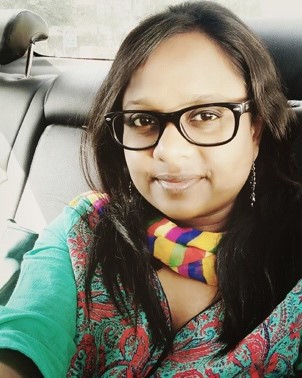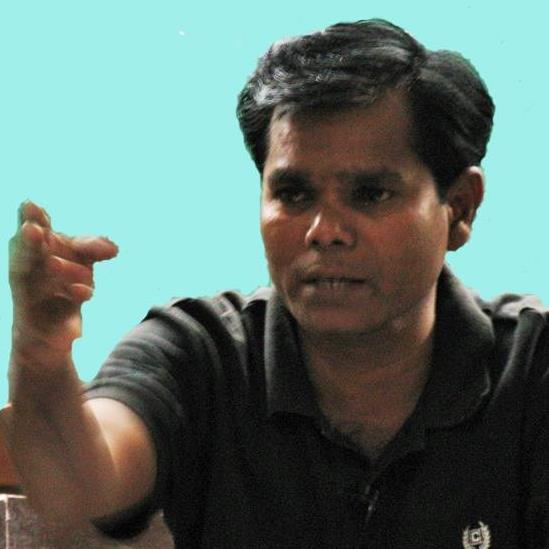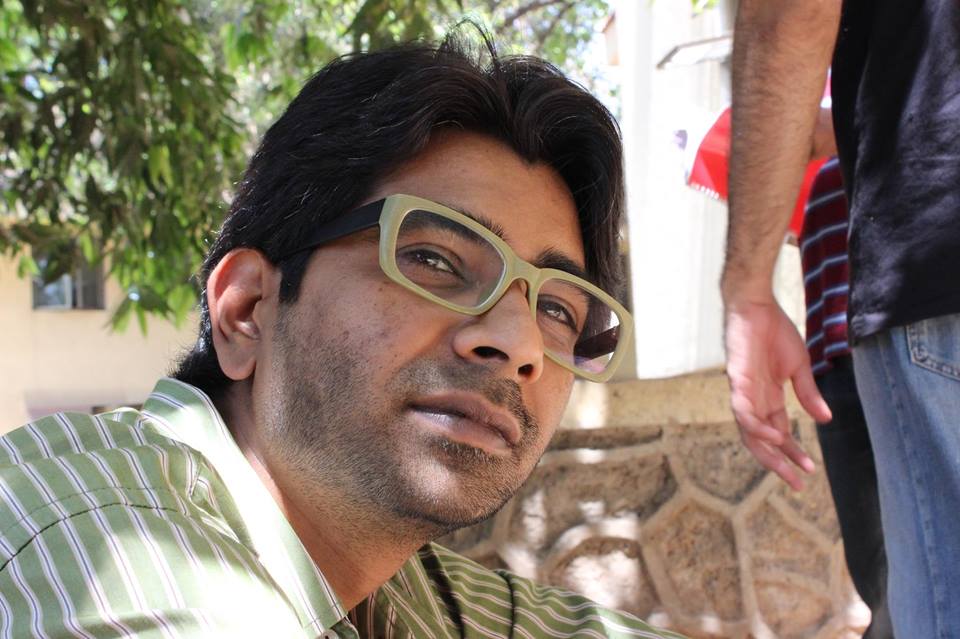Kalyani K
 COVID-19 as a pandemic has affected the population across geographies irrespective of people’s nationality, class, race, caste etc. The virus causes the same symptoms and can affect almost anyone. But can one claim COVID-19 virus is a global equalizer? The question needs a contextual understanding of the ways in which social realities around the virus have unfolded. Interestingly what COVID-19 has exposed to the world is that the experiences of coping with it are not the same for all. Whether it be accessibility to medical help, affordability of social distancing or choice of self-isolation, not everyone finds themselves in the same boat. The experiences of COVID-19 have not been a homogenizing experience, and in India the experiences of COVID-19 cannot be separated from the caste-based experiences that have continued to prevail for centuries.
COVID-19 as a pandemic has affected the population across geographies irrespective of people’s nationality, class, race, caste etc. The virus causes the same symptoms and can affect almost anyone. But can one claim COVID-19 virus is a global equalizer? The question needs a contextual understanding of the ways in which social realities around the virus have unfolded. Interestingly what COVID-19 has exposed to the world is that the experiences of coping with it are not the same for all. Whether it be accessibility to medical help, affordability of social distancing or choice of self-isolation, not everyone finds themselves in the same boat. The experiences of COVID-19 have not been a homogenizing experience, and in India the experiences of COVID-19 cannot be separated from the caste-based experiences that have continued to prevail for centuries.
In India, the spread of COVID-19 has only laid bare the wide cracks of stratification based on caste, where the ‘privilege’ of surviving the virus has not escaped caste-based realities. The prevalence of illness and loopholes in society cannot be compartmentalized in a water-tight manner. Susan Sontag (1989) in her discussion on the spread of AIDS as a global pandemic has argued that the deaths due to AIDS virus were far from even. She has argued that a pandemic is not just an illness in medical terms; it also exposes the vulnerabilities that the ‘lesser privileged’ might face at the pretext of such illness. The suppression of an illness like AIDS was followed by a ‘more dangerous’ form of suppression and violence than the disease per se. These ‘dangerous’ forms had been unleashed via state-sponsored authoritarianism and repressive curtailment of freedom.
In India, these repressive and violent orders are channelized through the structures of caste that have constantly been reinforced through the metaphor of body. The experiences of ‘social-distancing’ in India was caste driven as it has only deepened the chasm of ghettoization of caste identity. There were reports that even during a state of crisis, the practice of untouchability prevailed in the form of non-acceptance of food from SC communities. There was a report from Nainital’s Bhumka village that food cooked by a Dalit woman in the quarantine centre was refused by a 23-year-old man (TOI dated 20th May, 2020). Similar reports have come from Kushinagar district, Uttar Pradesh, where food cooked by Dalits was refused (The Telegraph, 12th April, 2020).
These instances of refusing to eat or accept water has not been a new phenomenon in the modern Indian state, and such practices have been previously witnessed in government-led midday meal schemes as well. However, the prevalence of such practices even in the time of a pandemic has only compelled one to think about how far the disease can be called an equalizer? Or even worse, has a pre-existing malice like untouchability been an impediment to tackle a situation like this global pandemic? The answer lies in the caste-driven social structure of Brahmanism that has inhibited the people from exhibiting social solidarity even during medical crisis situations. Thus, one needs to rethink the question of what makes a pandemic worse: is it just the inability to develop vaccines or is it also the social chasm rooted in Brahmanism that inhibits people from coming together to fight it?
COVID-19 has been a bitter experience for various religious institutions. However, the ways in which Brahmins from the temple have shown solidarity to escape the economic crisis due to temple lockdowns, reflects the deep sense of communitarianism that prevails among the upper castes. Recently, according to one of the reports from Bhopal, Brahman Ekta Sahyaga Sanskar Manch has donated 8 crores to variouas Brahmanical organizations. This was done on the pretext that this would benefit about 25 thousand brahmans (Patrika, dated May 17, 2020). The problem here is that the Godman of the temples continues to be upper caste and institutionalized help to religious institutions like temples serves only upper caste Brahmins and not all Hindus, as they might falsely claim to help.
Many of the temples have come up with the provision of Online Darshan, Online Prasad delivery etc. Thus, the economic inflow to the temples has never been a problem. The trustees of most billionaire temples continue to be upper caste Brahmins and any support coming to the temple is the support to the upper caste Brahmins who have the ‘privilege’ of occupying the sanctum sanctorum spaces in the temple. While other castes including SC/ST/OBC may be associated with the temple, economic support to ‘others’ may never trickle down from the hands of ‘privileged Brahmins’. Thus, in times of crisis like COVID-19, Brahmanism stands strong and resists from breaking down. As long as the Dalit-Bahujan continue to associate themselves with Brahmanical institutions like temples, Brahmanism is far from losing its relevance. The only purpose the Dalit-Bahujan serve in spaces like temples is to sanctify the Brahmanical privilege.
One of the main reasons for survival of Brahmanism is that the caste ridden Indian society, through scriptural sanctions, has given Brahmins a ‘privileged-self’ in many tangible and intangible forms. These privileges are dynamic in nature as they change and adapt according to the needs of the time. In times of crisis like COVID-19, the new Avatar of Brahmanism has been its promotion through different digital channels. W. F. Ogburn (1922) through his concept of ‘cultural-lag’ has argued that while cultural factors may refuse to change with time, material factors in the culture might show considerable progress. The Online Darshan, Online Prasad distribution, Digital Arti, Whatsapp delivery of Subh Muhurat etc. are all the new avatars of old Brahmanism. Thus, while globally, physical distancing has become the ‘new normal’, the historical caste-based ‘social distancing’ continues to remain within Indian society. The caste hierarchy fails to loosen; rather it takes newer forms to strengthen and spread itself.
The violence and attacks on Dalits have not ceased even in the times of corona. Arranging for PPE kits to protect sanitation workers continues to escape the state agenda. Most of the Safaikarmacharis, most of whom belong to the Dalit communities are not given basic civic amenities like masks and gloves. They are much more vulnerable to coronavirus than Brahmins cleaning empty temples. The very act of exposing themselves to the virus makes them vulnerable. The vulnerability of the Dalit-Bahujan community however cuts across the class divide. Even Dalit doctors have been rendered vulnerable. In a recent incident, a Dalit doctor, Dr. Sudhakar Rao from Narsipatnam, Andhra Pradesh, was beaten up by police when he demanded basic rights like masks for protection (BBC India, dated May 21, 2020). Even the commendable work done by Dalit bureaucrats, like Tina Dabi and her team through the Bhilwara model, fails to get mainstream media attention and appreciation. Thus, COVID-19 for India has been a caste experience, where the ‘privileged castes’ might get all the appreciation and be made ‘warriors’, while the Dalit-Bahujan ‘warriors’ might be strategically forgotten.
Thus, it will be too naïve to presume that the epidemic in any form is going to be an equalizer because the social illness far exceeds the damage that a medical illness might do. In fact, the times of COVID-19 have only rendered Dalit-Bahujans more vulnerable given their social and economic position in society. It is heartening to see the socio-cultural revolutions through which exclusions are being defied. However, to smash Brahmanism and Brahmanical domination that have been the root cause of caste-based-oppression, one needs to understand the social structures like religion, rituals, beliefs and practices through which it functions and unfolds itself. Assuming COVID-19 will finish it all and bring a homogenized thinking society would be too naïve.
~
References
Ogburn, William F. (1922). “Social Change with Respect to Culture and Original Nature”. New York: B. W. Huebsch, Inc.
Sontag, Susan. (1989). “AIDS and Its Metaphors”. New York: Doubleday.
~~~
Kalyani K is Ph.D. scholar at Center for the Study of Social Systems, Jawaharlal Nehru University, New Delhi.










